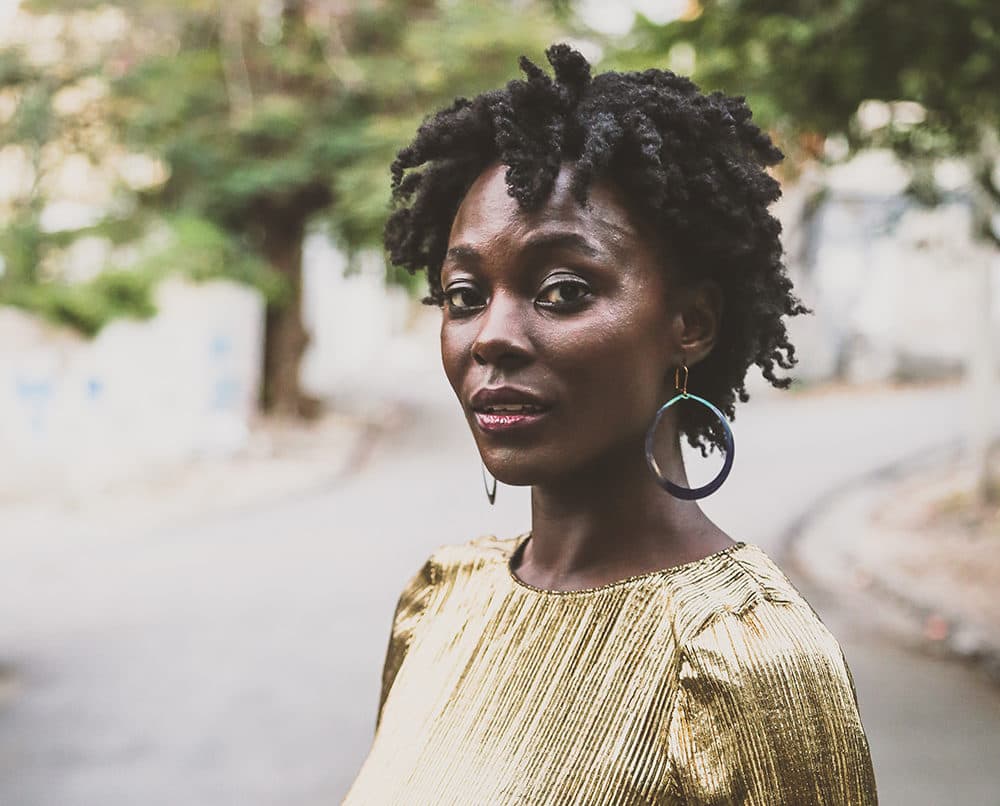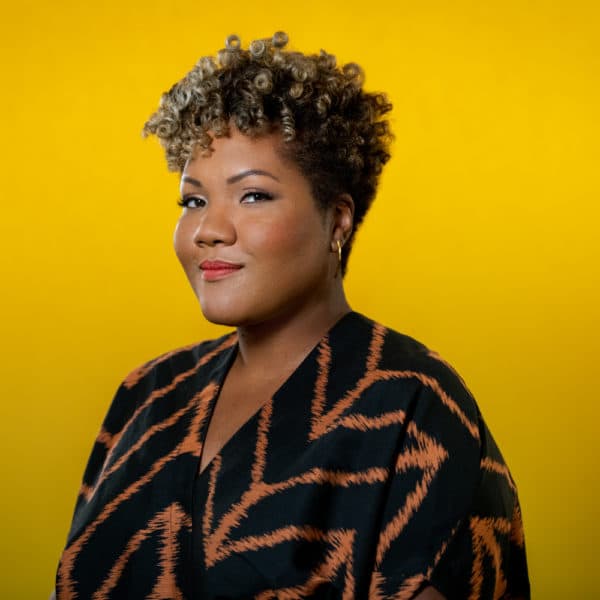Advertisement
Grammy-Nominated Nathalie Joachim Wants To 'Give Voice To The Beauty That Is Not Often Shown' In Haiti
Resume
Haitian American flutist, vocalist and composer Nathalie Joachim's first featured solo album "Fanm d'Ayiti" has earned her a Grammy nomination for Best World Music Album.
“Fanm d'Ayiti" — which translates to “Women of Haiti” — celebrates her Haitian heritage and serves to highlight some of the country's unrecognized female artists.
Joachim says the Grammy nomination — “a dream come true” — makes her feel proud to represent her country through music. The album was her first solo project and one that she poured herself into.
Producing “Fanm d'Ayiti" was the “first time that I'm sort of stepping into myself as an artist, really claiming all of my identities as being Haitian American, as being a woman, as being a black artist,” she says.
This week marks 10 years since Haiti experienced its worst natural disaster — a catastrophic 7 magnitude earthquake, accompanied by dozens of aftershocks, that killed an estimated 300,000 people and left millions injured and homeless.
In her album, Joachim says she wanted to capture the “spirit of Haitian people within music” — songs that reflect their strength after “exceptionally trying times,” such as that 2010 earthquake.
She travels back to Haiti often and says the disastrous effects of the natural disaster can still be seen across the country today. But Haitians’ “joyous spirits” have not faded, she says.
“You also see this beautiful sense of strength and perseverance in the people that they will not be held down no matter what hardships come their way,” she says, “And I am proud myself to be standing as a Haitian American, to give voice to the beauty that is not often shown about Haiti.”
Interview Highlights
On the genesis of “Fanm d'Ayiti"
“I was in Haiti back in December of 2015, and it was my first visit to Haiti after the passing of my maternal grandmother, who is a very important voice for me in my life. And it got me thinking about how prevalent the voices of women are in the landscape in Haiti, particularly in the countryside, but that when I looked at the popular music scene in Haiti, all I could really think of was very few women who had gained popularity. I think when people think of traditional Haitian music going back many years, they think of solo artists who are men really, you know, group big bands of men like Tabou Combo. It's a very male-heavy group. And so I asked my parents, who are female artists they could think of who was on the radio when they were growing up? And they too could only really come up with a list of about a dozen or so women. That was intriguing to me because in the scope of American history, if we had only a dozen or so women in the past hundred years who were famous, it would be very odd. So it piqued my interest also because, you know, for there to have been so few, what was so special about them was really what I wanted to know and I certainly found out in researching this project.”
On how she began playing the flute
“I started playing flute in elementary school, sort of by chance. I think a lot of people have this experience where someone comes to school and demonstrates all the instruments and everybody sort of chooses one. So I truly just came home from school one day and said, 'Mom, I think I'm going to play the flute.' And there was not really a lot of rhyme or reason to it, but I'm glad that it's the instrument that I chose because I took to it really quickly and I haven't wanted to stop playing since.”
On how The Juilliard School shaped her as a musician at a young age
“I am an alumnus of Juilliard Music Advancement Program, which is actually a program that started in response to a lot of music programs being cut out of public school programs in New York and the tri-state area. And so I really started serious music study there when I was 10 years old. I'm also an alumnus of their pre-college division, which is their sort of premier pre-college program for exceptionally talented students. And I'm also a graduate of their college division. So I really grew up musically in that building.”
On the message and history behind the song “Lamizé pa dous”
“It is one that dates well back, but actually the version of it that I fell in love with is a rendition of Toto Bissainthe. And she was a beautiful Haitian female artist who was not only a singer, but also an actress and an avid storyteller. The translation of "Lamizé pa dous" is ‘misery is not sweet,’ and it speaks of being called to go to another place because you are not a person of the place that you exist in physically. And in many ways, this was a song that we used to encourage slaves to ready themselves for the Haitian revolution. And, you know, not that different than the Negro spiritual, which often were simple songs with hidden messages, this song has a similar history. And I love this idea that it is possible to persevere out of extreme moments of hardship. And I think that that was relevant preceding the Haitian revolution [and] is just as relevant in Haiti and across the world today.”
On how she blends classical and popular genres with Allison Loggins-Hull in their duo, Flutronix
“A little bit over a decade now, I happened to be on the internet and I encountered the music of Allison Loggins-Hull, who is now my partner in Flutronix, and at the time I myself had begun experimenting with electric-acoustic music, also hip-hop, R&B, jazz, indie rock. And so when I stumbled upon Allison's music and found that she was doing the same thing, I thought to myself, ‘I must meet this person.’ And so I actually sent her a blind message on the internet and was just like, ‘I think we should be friends. I love your music.’ And she agreed and turned out that we lived actually just blocks away from each other in Brooklyn, New York. About a week later, we met up at her house and just talk to each other for hours. And both of us had this shared appreciation of the rigor and the sort of sheer excellence that comes from classical music training, but also the excitement and the beauty of other genres of music and why not be blending them together? And so that day, Flutronix was born. And I should mention that Allison, along with Tony Maimone, who is a creative collaborator of ours, the three of us, co-produced ‘Fanm d'Ayiti’ together. And so all of it is in this spirit of fusing together, musical voices and personal voices, as is reflected on ‘Fanm d'Ayiti’ with the conversations that we share through that project as well.”
Ciku Theuri produced and edited this interview for broadcast with Todd Mundt. Serena McMahon adapted it for the web.
This segment aired on January 16, 2020.

